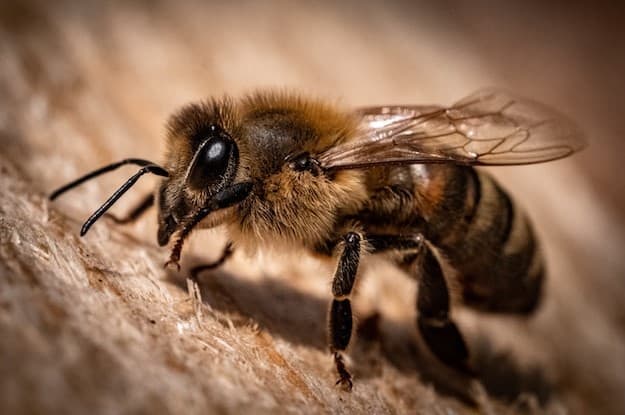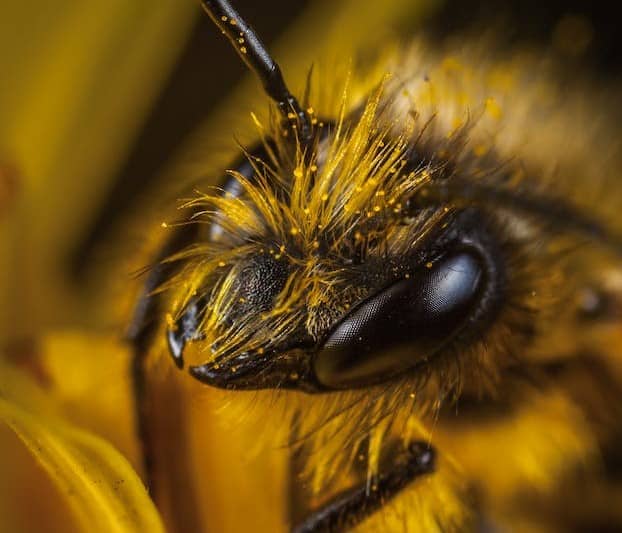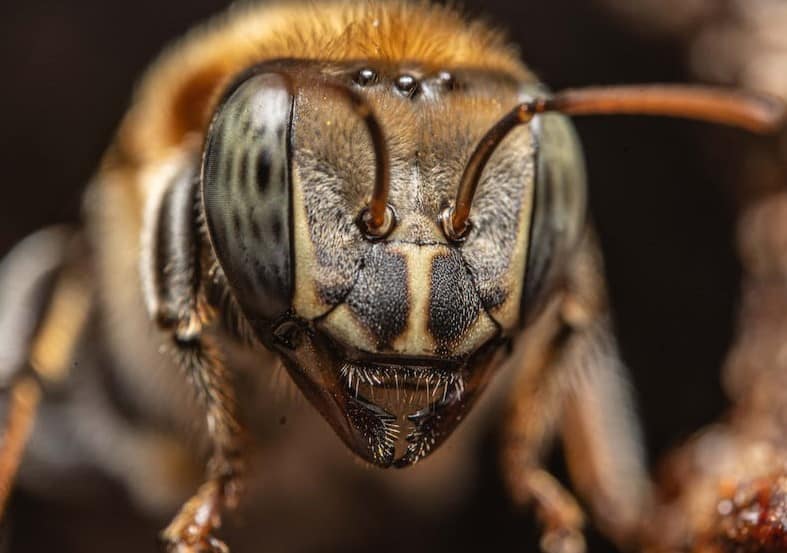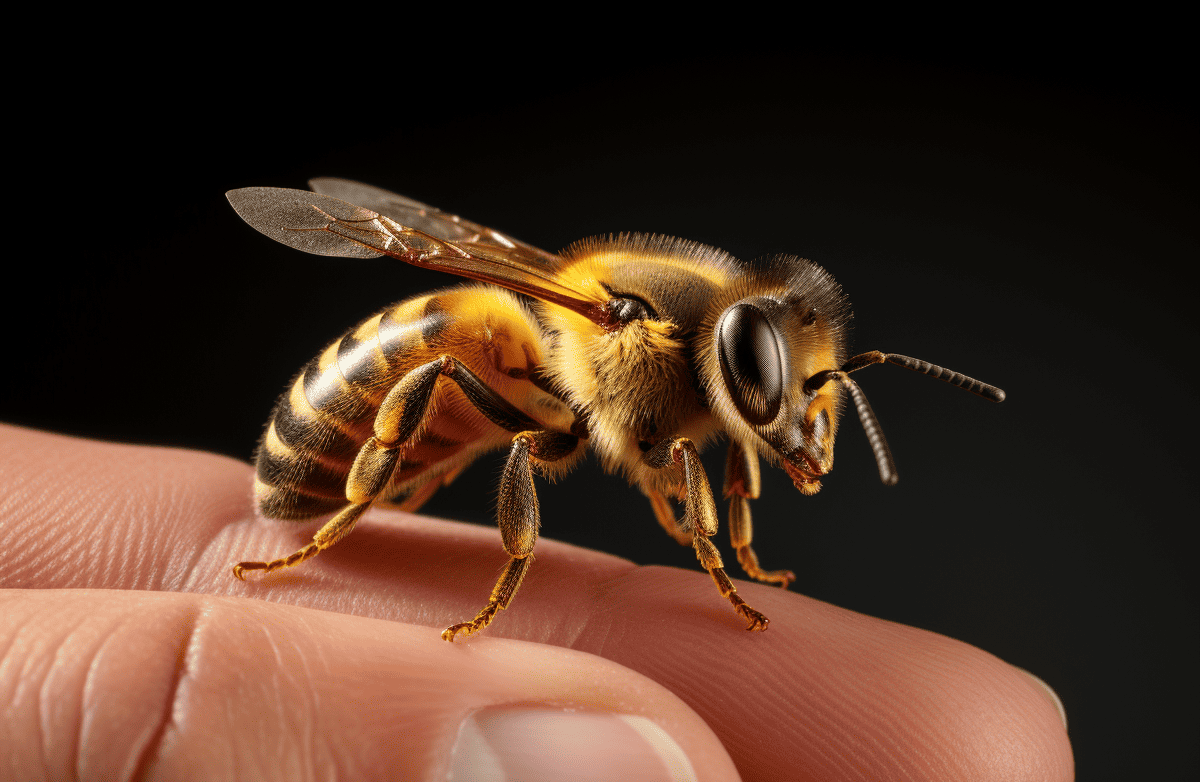Have you ever wondered about the anatomy of an animal? Do they have the same body parts as humans? And as beekeepers, one could also not help but wonder whether bees have ears, hearts, nails, teeth, etc.
Admit it: when you so love your bees, various questions have entered your mind that are all related to bees. And one of these pressing questions is whether bees have teeth and if they bite.
Do Bees Have Teeth?

Commonly known as a body part found on the jaw, the teeth are used in catching, biting, chewing, and breaking down food. In most animals, they are structured strongly to withstand pressure and are found in or around the mouth.
With such a common perception of teeth, we could say that bees do have teeth. They may not look like human teeth, but bees’ mandibles are considered bee teeth.
Looking at the anatomy of a bee, particularly on the bee’s head and face, one could see the mandibles. At the end of the mandibles are grooved edges. These grooved edges are actually part of the mandibles, but most people would consider these as the bees’ “teeth.”
The bee’s teeth are used the same way other animals use their teeth. Bees catch their prey using their teeth and mandibles and chew or bite on it before putting it in their mouths.
So, while others may not agree that these are bee teeth, they perform the same function as any other animal’s teeth.
So yes, bees have grooved edges on their mandibles that are considered their teeth.
What do Bee Mandibles look like?
The bee’s mandibles are found in front of its face and look like extended claws or pincer claws (just like those found in crabs).
At the end of each mandible are claw-like, toothed edges.

Do all Bees have Toothed Mandibles?
Honey bees, bumble bees, carpenter bees, mining bees, and all other bee species have toothed mandibles, but not all look the same. Some bees would have more ridged mandibles than other species, depending on the tasks they face naturally in their lives.
It is more common for a queen bee’s mandibles to be structured better compared to those of worker bees. Queen bees face the task of damaging and removing thick wax when she has to get out of the egg. Male bees and worker bees are not covered in thick wax, so they may have less structured bee mandibles.
A drone bee would most likely have smaller mandibles with teeth less pronounced. This bee performs no hard labor in the caste system of the honey bee colonies. The male drone bees are tasked to mate and fertilize queen bees.
How do Bees use their Toothed Mandibles?

Biting
The bee’s tooth mandibles are used for catching food. Remember, there are bees that eat other insects besides pollen and nectar. These bees capture their insect preys with their mandibles, bite them with their teeth, and bring the food into their mouths.
Bees are known to carry pollen back to their hives through their pollen sacs. In some cases, bees bite into their food and carry it back home to share with their larvae and other bees.
Or, the bees may carry materials necessary for building their homes. The bee’s teeth play an important role in ensuring that these foods and materials do not slip out of their mandibles.
While bees are known to sting, bees without stingers can bite to ward off threats. As a defensive measure, bees use their claw-like mandibles to fight predators.
Chewing
Remember the carpenter bees that gnaw their way into wooden structures? These bees excavate the wood by grinding their teeth along the wood. They do not eat the wood but would chew on them to make a hole.
For carpenter bees, the toothed mandibles help in gnawing on wood to create their burrows on wooden structures. The rugged edges of the mandibles help these bees in excavating and creating their nests.
Honey bees likewise chew nectar and pollen. In the process of making honey, the honey bee worker starts to collect nectar from flowers. This worker bee stores nectar in its “honey stomach.”
Once it reaches the hive, it regurgitates the stored nectar to another honey bee for processing. This receptive bee chews on the nectar, adding some enzymes from the bee’s saliva and turning it into honey. It is then later stored in the honeycombs.

Cutting
The queen bee is covered in more wax layers than a worker bee while in the brood cells. Before learning other tricks, the queen bee first learns to use her bee mandibles to break out of her wax cells. A queen bee’s sharp teeth are used to cut through the wax layers that cover her. Once she is out of her queen cell, she helps other baby bees get out of their own natal cells.
A female leafcutter bee cuts pieces of a leaf to build its nest. In doing so, this bee uses its sharp-cutting teeth on its mandibles to accomplish this task.
Marking a Territory
A male bumblebee is often seen sort of repeatedly biting on a stem or piece of wood. This action releases a marking scent from the bee’s mandibular glands. This scent marks the territory, telling other bees that the area is taken.
How many Teeth does a Bee Have?
There is no fixed number of toothed points on the mandibles of bees.
Again, depending on what the bees’ needs are for rigged-edged mandibles, their mandibles could have 3-5, on average, sharp points on the edges.
A good example would be the Meliponines or Stingless Bees. By its name, the stingless bee does not have stingers. The lack of stingers does not prevent this bee from charging on or defending its territory when threatened.
Instead of stinging, the stingless bees use their mandibles. They have five “teeth” on their mandibles, allowing them to deliver a painful bite in lieu of a sting.

Do Bees Bite with Their Teeth?
Just like any other animal, bees use their teeth for biting. In addition to catching food, the bees hold onto their food by biting it with their mandibles before directing it to their mouths.
Can a bee bite you? This might be the more pressing question.
Yes, as mentioned above, the stingless bees, for one, can bite you if they ever feel that you are a threat to their lives or territory.
Without a stinger, they cannot deliver a bee sting. Instead, they resort to delivering a numbing bite to their enemies.
